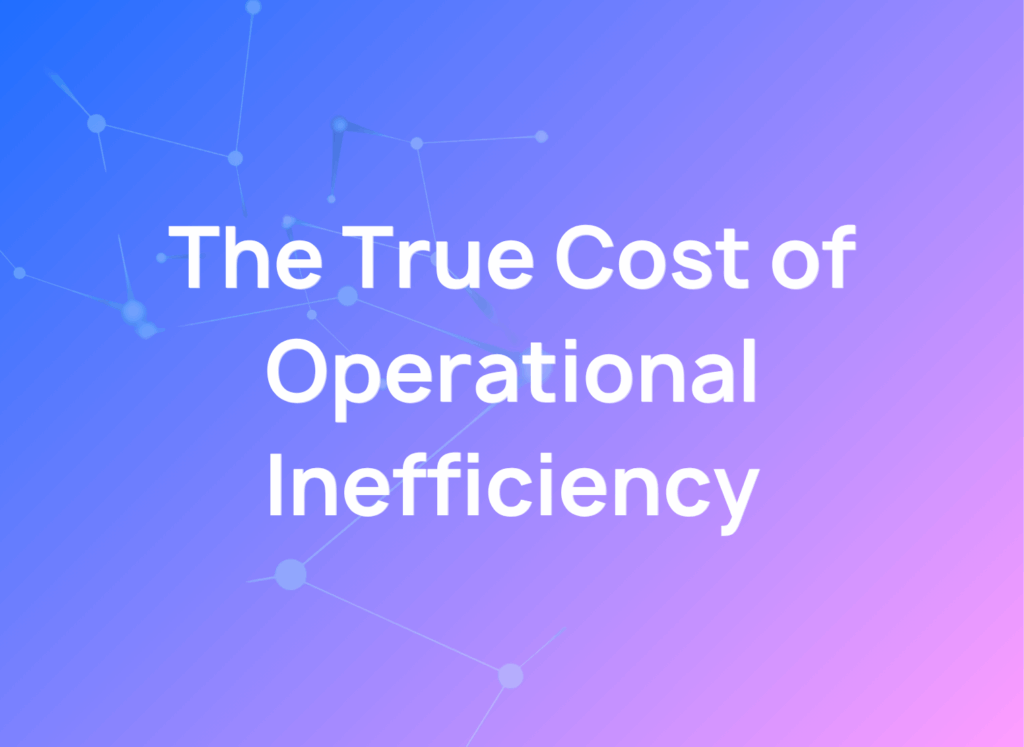Why LLMs Aren’t Enough: Building Digital Workers for Enterprise Automation
Why LLMs Aren’t Enough: Building Digital Workers for Enterprise Automation
Large Language Models (LLMs) have captured the business world’s imagination. They can generate human-like text, draft emails, and even write code. Businesses rushed to adopt copilots, expecting a wave of AI-powered growth. Yet the initial euphoria has started to fade.
The Harvard Business Review reports that 95% of LLM copilots fail to improve productivity, and in some cases, cost enterprises up to $9M a year in lost time. The problem is clear: they produce generic outputs, create errors, and require human workers to spend hours cleaning up the mess. The result is low ROI and growing frustration.
This is why agentic Digital Workers represent the logical next step. Where LLMs tease you with glimpses of automation, Digital Workers actually deliver it - executing workflows end-to-end with reliability.
Why aren’t LLMs enough for enterprise automation?
At their core, LLMs are general-purpose tools. They’re designed to generate language, not to run complex enterprise operations. They can summarize or draft content, but they lack the architecture, reliability, and capability needed to perform specialized, regulated processes at scale.
Digital Workers are different. Built as rational, multi-agent systems, they can:
- Pull in new information from enterprise systems, seamlessly integrating with the organization’s existing infrastructure.
- Apply context and causal reasoning, and have the ability to self-regulate, learning from past mistakes, as a human would.
- Make decisions in natural language and execute them across applications.
- Rigorously evaluate their output with "Judge Agents" that monitor results.
Just as a surgeon wouldn’t use a handyman's drill for heart surgery, enterprises can’t rely on generic chatbots for their most critical processes. They need purpose-built systems designed for reliability and impact.
How do Digital Workers ensure enterprise-grade reliability?
In industries like finance, healthcare, law, and insurance, “mostly accurate” is not good enough. One error can lead to compliance breaches and financial loss. For example, in 2023 a U.S. judge sanctioned two New York lawyers after ChatGPT generated six fictitious case citations in a legal brief.
LLMs, by their probabilistic nature, are inconsistent. They can hallucinate, producing wrong outputs without explanation. Digital Workers, on the other hand, are built for deterministic reliability:
- Causal reasoning at the core, enabling cause-and-effect within workflows.
- Deterministic business logic ensures rules are followed every time.
- End-to-end monitoring provides full observability and auditability.
Our layered approach delivers high levels of accuracy in regulated use cases, giving enterprises the confidence to automate their most critical operations.
What can Digital Workers do that LLMs can’t?
LLMs can draft a polished customer email response. A Digital Worker can handle the entire case. This distinction is critical:
- LLMs = helpful chat-based assistants that produce content and help humans ideate.
- Digital Workers = autonomous team members that complete processes end-to-end.
From logging into systems, to validating data, updating CRMs, and engaging stakeholders, Digital Workers replicate how a skilled employee would work - but faster and without error.
The result is true automation that frees employees to focus on strategy and innovation, rather than repetitive manual work.
How do Digital Workers integrate with existing systems?
Another limitation of many LLMs and AI copilots is their isolation. They operate in silos, outside the enterprise system of record. This creates fragmented processes and costly workarounds.
Digital Workers avoid this trap. They integrate seamlessly and directly into existing systems of record - ERP, CRM, SaaS applications, and internal databases - so processes are automated where the data already lives. No costly migrations. No disruption to operations. Just seamless orchestration across the tools you already use.
How fast can enterprises see value from Digital Workers?
AI adoption shouldn’t require endless pilots or months of experimentation. Too many LLM initiatives look good in a demo but fail to scale. In fact, 88% of AI pilots never reach production in enterprise settings.
Digital Workers are delivered with pre-built blueprints designed for real-world impact, such as:
- Supply line forecasting.
- Medical information intake.
- Marketing operations.
- Claims processing.
- Regulatory reporting.
This accelerates deployment and delivers measurable savings from day one. It’s like hiring a ready-trained employee who starts delivering value on day one, only without all the onboarding.
What ROI do Digital Workers deliver?
The ultimate measure of any enterprise technology is ROI. With LLMs and AI copilots, ROI often stalls at “incremental.” With Digital Workers, the gains are transformative.
- For every $1 invested, enterprises typically see $5 in digital labor value.
- Companies like Syneos Health achieved 500% ROI in a short space of time.
These aren’t hypothetical gains - they’re measurable improvements in efficiency, compliance, and cost savings at scale. Each new digital worker will compound that value, ultimately creating a new standard for enterprise productivity.
Conclusion: Businesses Won’t Compete Without Digital Workers
AI will ultimately be seen as a foundational technology, like electricity. But just as electricity required specialized systems and devices to unlock its potential, AI requires Digital Workers to deliver true enterprise value.
Industries like banking, insurance, healthcare, pharmaceuticals, and telecom have already invested heavily in automation. But these sectors are also where LLMs and AI copilots fall short - due to regulatory demands, exceptions, and complexity. By moving to Digital Workers, they can automate entire processes, such as claims handling or clinical trial reporting, with reliability and compliance.
Final takeaway: LLMs are useful copilots; Digital Workers are colleagues. Businesses that continue to treat AI as a chatbot will fall behind. Those who deploy intelligent Digital Workers will gain a decisive competitive edge.
They’re probabilistic, not deterministic. LLMs predict the next word; they don’t guarantee repeatable outcomes or strict rule adherence. That’s fine for drafting, but it fails in regulated, exception‑heavy workflows where every step must be consistent, traceable, and integrated. LLMs lack stable business logic, true causal reasoning, end‑to‑end monitoring / auditability, and deep system integrations—so errors and rework creep in. Digital Workers add deterministic logic, guardrails, and native integrations so processes run the same way, every time.
They connect directly to ERPs, CRMs, SaaS tools, and internal databases, orchestrating actions where data already lives. No data migrations required—just secure API/RPA-style connections with full observability and audit trails.
Enterprises commonly see step-change ROI (e.g., 5:1 digital labor value) thanks to end-to-end automation, fewer errors, faster cycle times, and compliance-ready processes. Pre-built blueprints accelerate time-to-value from day one.
LLM copilots often deliver quick wins in drafting but stall in production because they lack deterministic logic, integrations, and auditability—so humans stay “in the loop” and scale is limited. Digital Workers ship with workflow blueprints, native system connections, and compliance guardrails, enabling end-to-end automation that goes live in weeks and delivers measurable ROI beyond content assistance.





